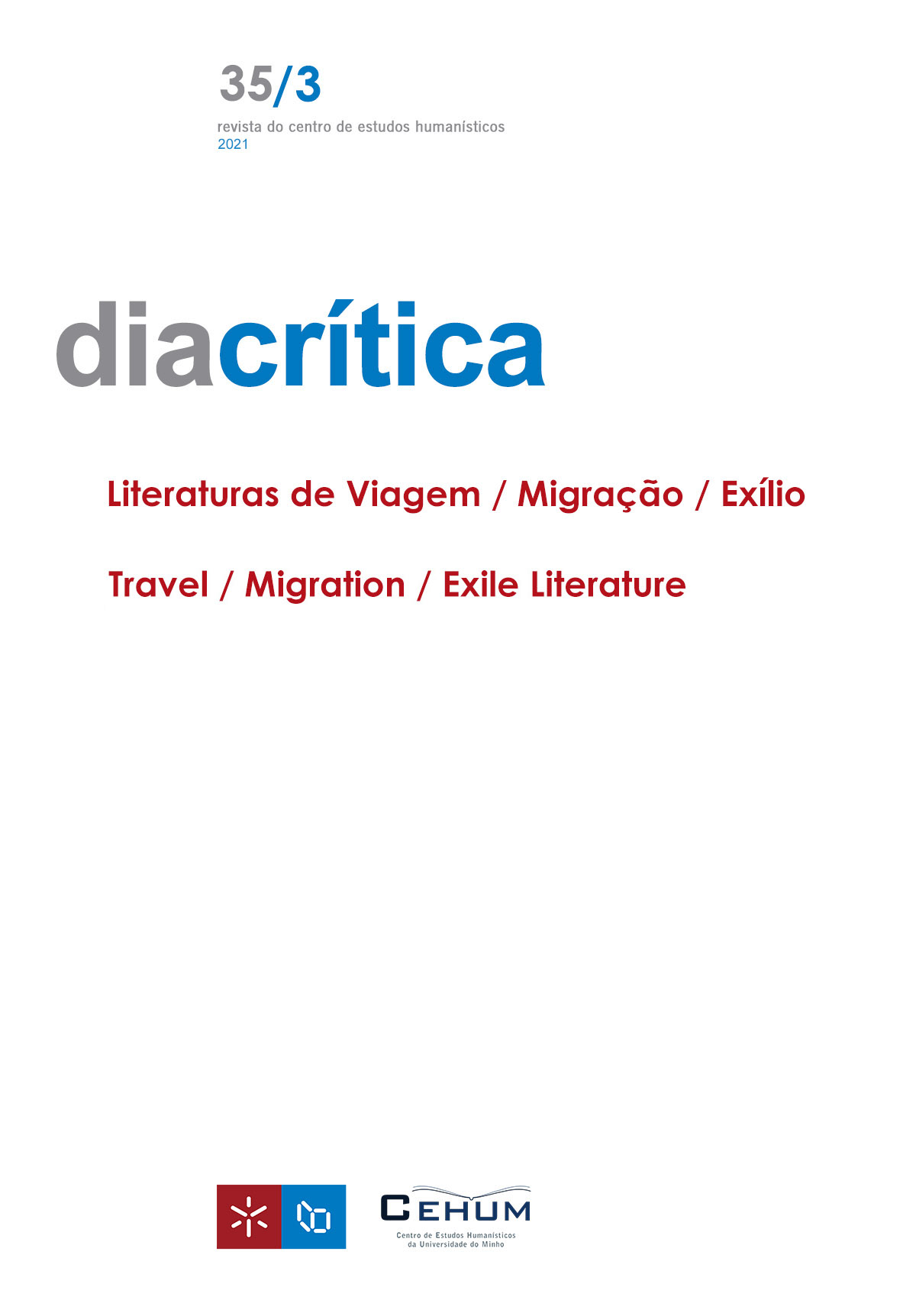A curiosidade das coisas, objetos e sujeitos no romance do incidente de Mark Haddon
DOI:
https://doi.org/10.21814/diacritica.5188Palavras-chave:
Haddon, Listas, Teoria das CoisasResumo
Começo com um momento de The Curious Incident of the Dog in the Night-time (2003), de Mark Haddon, descrevendo um encontro com as coisas, na forma de uma enumeração e um tipo de colecção, onde vida corporal, sensorial, mental e imaginativa se fundem. Ao sondar as fronteiras porosas, afinidades e fricções entre sujeitos e objetos contemporâneos, com corpos, mentes especiais e coisas, este ensaio desenvolve novas abordagens para noções de materialidade, o mundo do objeto e a experiência corporificada enquanto também questiona desenvolvimentos na área da cultura material, estudos do objeto, fenomenologia cultural e teoria das coisas. Haddon e Boone (o narrador/protagonista) insistiram na base material de todos os aspectos da existência humana e finalmente concluíram que o sujeito pode ser transformado materialmente por meio da interação com objetos.
Referências
Berger, J. (2008). Alterity and autism: Mark Haddon’s Curious Incident in the neurological spectrum. In M. Osteen (Ed.), Autism and Representation (pp. 271–288).New York: Routledge.
Blackford, H.(2013). Raw Shok and modern method: Child consciousness in Flowers for Algernon and The curious incident of the dog in the night-time. Children's Literature Association Quarterly,38(3),284–303.https://doi.org/10.1353/chq.2013.0038 DOI: https://doi.org/10.1353/chq.2013.0038
Boehm, K. (2012). Bodies and things in nineteenth-century literature and culture. London: Palgrave MacMillan. DOI: https://doi.org/10.1057/9781137283658
Brown, B. (2001). Thing theory. Critical Inquiry,28(11), 1–2. https://doi.org/10.1086/449030 DOI: https://doi.org/10.1086/449030
Brown, B. (2003). A sense of things: The object matter of American literature. Chicago: University of Chicago Press. DOI: https://doi.org/10.7208/chicago/9780226076317.001.0001
Ciocia, S. (2009). Postmodern investigations: The case of Christopher Boone in The curious incident of the Dog in the night-time. Children’s Literature in Education, 40, 320–332.https://doi.org/10.1007/s10583-009-9093-0 DOI: https://doi.org/10.1007/s10583-009-9093-0
Foer, J.S. (2005). Extremely loud and incredibly close. New York: Mariner.
Freißmann, S. (2008). A tale of autistic experience: Knowing, living, telling in Mark Haddon’s The curious incident of the dog in the night-time. Partial Answers: Journal of Literature and the History of Ideas,6(2),395–417.https://doi.org/10.1353/pan.0.0010 DOI: https://doi.org/10.1353/pan.0.0010
Gell, A. (1998). Art and agency: An anthropological theory. Oxford: Oxford University Press.
Gilbert, R. (2005). Watching the detectives: Mark Haddon’s The curious incident of the dog in the night-time and Kevin Brooks’ Martyn pig. Children’s Literature in Education,36(3), 241–253. https://doi.org/10.1007/s10583-005-5972-1 DOI: https://doi.org/10.1007/s10583-005-5972-1
Greenwel, B. (2004). The curious incidence of novels about Asperger’s syndrome. Children’s Literature in Education, 35,271–284.https://doi.org/10.1023/B:CLID.0000041783.90370.14 DOI: https://doi.org/10.1023/B:CLID.0000041783.90370.14
Haddon, M. (2003). The curious incident of the dog in the night-time. London: Vintage Contemporaries.
Jones, A. (2009). Archaeological theory and scientific practice. Cambridge: Cambridge University Press.Merleau-Ponty, M. (2002). Phenomenology of perception. London: Routledge.
Merleau-Ponty, M. (1968).The visible and the invisible. Evanston, IL: Northwestern University Press.Miller, K. (2008). Thing and object. Acta Analytica,23(1), 69–89.https://doi.org/10.1007/s12136-008-0021-5 DOI: https://doi.org/10.1007/s12136-008-0021-5
Muller, V. (2006). Constituting Christopher: Disability theory and Mark Haddon’s The curious incident of the dog in the night-time. Papers: Explorations into Children’s Literature,16(1), 118–125.https://doi.org/10.3316/informit.235123185330257
Murray, S. (2006). Autism and the contemporary sentimental: Fiction and the narrative fascination of the present. Literature and Medicine,25(1), 24–45.https://doi.org/10.1353/lm.2006.0025 DOI: https://doi.org/10.1353/lm.2006.0025
Mussetta, M. (2014). Semiotic resources in The curious incident of the dog in the night-time: The narrative power of the visual in multimodal fiction. MATLIT,2(1), 99–117.https://doi.org/10.14195/2182-8830_2-1_5 DOI: https://doi.org/10.14195/2182-8830_2-1_5
Ray, S.J. (2013). Normalcy, knowledge, and nature in Mark Haddon's The curious incident of the dog in the night-time. Disability Studies Quarterly,33(3), 11. https://doi.org/10.18061/dsq.v33i3.3233 DOI: https://doi.org/10.18061/dsq.v33i3.3233
Rose, I. (2008). What can we do with The curious incident of the Dog in the night-time? Popular fiction and representations of disability. Popular Narrative Media,1(1), 43–58. DOI: https://doi.org/10.3828/pnm.1.1.6
Serres, M. (1995). The natural contract. Ann Arbor: The University of Michigan Press. DOI: https://doi.org/10.3998/mpub.9725
Symons, A. (1958). The symbolist movement in literature, New York: Dutton.
Talley, H.L. (2005). Review essay: The curious incident of disability in the night-time. Journal of Contemporary Ethnography,34(2),235–245. https://doi.org/10.1177/0891241604272647Tilley, C.Y. (2006) Handbook of material culture. London: SAGE. DOI: https://doi.org/10.1177/0891241604272647
Wilde, O. (2006). The picture of Dorian Gray. Oxford: Oxford University Press.
Downloads
Publicado
Como Citar
Edição
Secção
Licença
Direitos de Autor (c) 2023 Luiz Fernando Ferreira Sá

Este trabalho encontra-se publicado com a Creative Commons Atribuição-NãoComercial 4.0.










